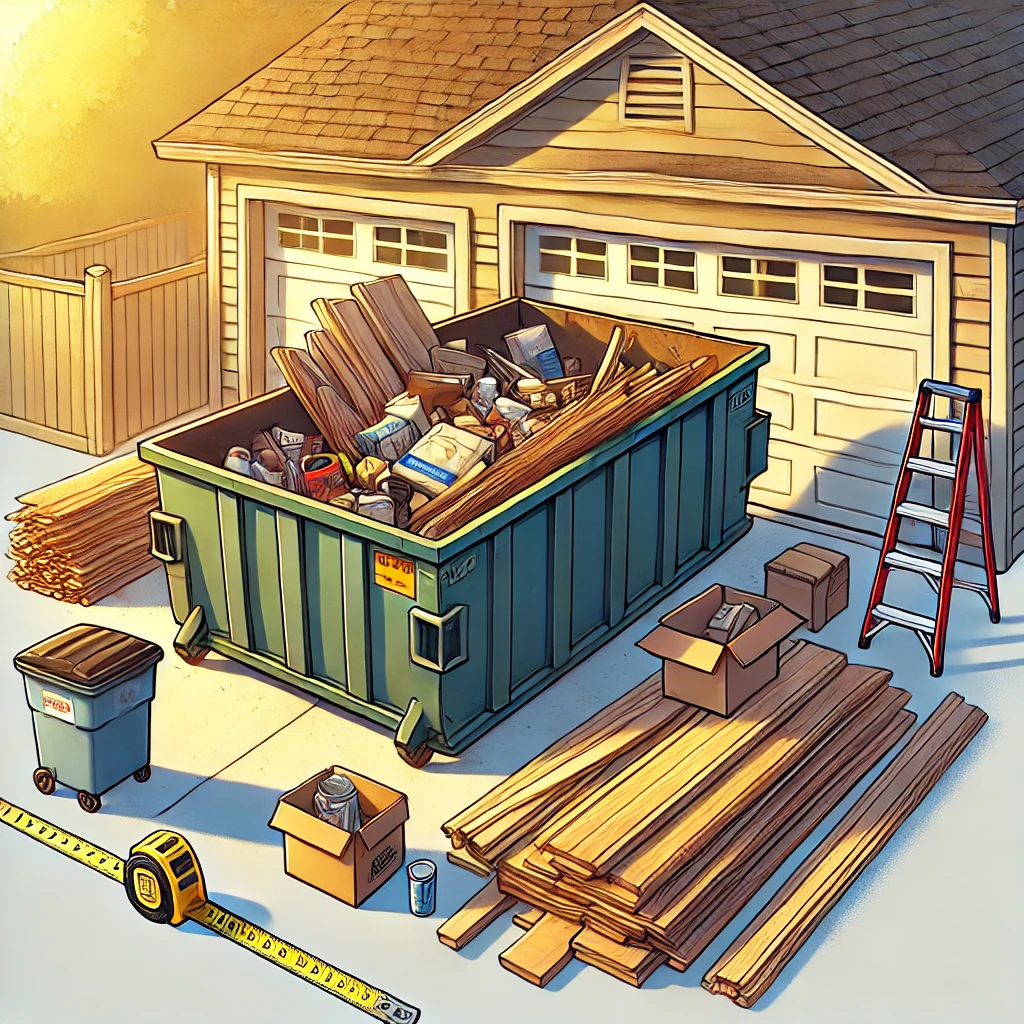
When renting a dumpster, knowing what potential pitfalls to avoid can save you time, money, and frustration. The most common mistakes include choosing the wrong size, underestimating rental duration, and failing to obtain necessary permits – but with proper planning and knowledge, these issues can be easily prevented. Understanding these key considerations before renting a dumpster will help ensure your project runs smoothly from start to finish.
Understanding Dumpster Rental Basics
Size Selection Errors
One of the most costly mistakes in dumpster rental is choosing an inappropriate container size. Selecting a dumpster that’s too small means paying for additional rentals or swap-outs, while renting one that’s too large wastes money on unused space. Carefully assess your project scope and discuss your needs with rental providers who can recommend the most cost-effective size based on their experience with similar projects.
Permit and Placement Planning
Many renters overlook the importance of proper permits and placement considerations. Before delivery, verify local requirements for dumpster placement on public streets or private property. Ensure you have a suitable location that’s accessible for delivery and pickup, with adequate clearance for the truck and protection for your property’s surfaces.
Cost-Related Misconceptions
Hidden Fee Awareness
Understanding the complete cost structure prevents unexpected charges. Common hidden fees include:
- Overage charges for exceeding weight limits
- Extended rental period fees
- Special material disposal surcharges
- Trip charges for failed delivery attempts
- Relocation fees for container moves
Weight Limit Violations
Exceeding weight limits is a frequent and costly mistake. Different materials have varying densities, making it challenging to estimate total weight. Heavy materials like concrete, soil, and roofing materials require special consideration and often necessitate smaller load volumes to stay within limits.
Timing and Schedule Management
Rental Duration Planning
Poor planning of rental duration can lead to rush fees or extension charges. Consider potential delays such as:
- Weather interruptions
- Contractor scheduling changes
- Material delivery delays
- Unexpected scope changes
- Permit processing time
Delivery Coordination
Failed delivery attempts due to poor coordination waste time and may incur additional fees. Ensure clear communication about:
- Exact placement location
- Access requirements
- Timing windows
- Contact information
- Special instructions
Loading and Usage Errors
Improper Material Loading
Incorrect loading practices can create safety hazards and complicate pickup. Follow these guidelines:
- Distribute weight evenly
- Load heavy items first
- Break down large items
- Don’t exceed fill line
- Cover loads during rain
Prohibited Items Management
Including prohibited materials can result in additional fees, fines, or service refusal. Common prohibited items include:
| Category | Examples | Disposal Alternative |
|---|---|---|
| Hazardous | Paint, Oil, Chemicals | Recycling Centers |
| Electronic | TVs, Computers | E-waste Facilities |
| Special | Tires, Appliances | Specialty Disposal |
Property Protection Measures
Surface Protection Strategies
Prevent property damage by implementing proper protection measures:
- Use plywood boards under container feet
- Clear placement area of obstacles
- Mark irrigation systems and utilities
- Consider surface material strength
- Monitor weather conditions
Access Path Preparation
Ensure safe and efficient delivery by preparing adequate access:
| Requirement | Minimum Specifications | Considerations |
|---|---|---|
| Width | 12 feet | Tree branches, posts |
| Height | 14 feet | Power lines, eaves |
| Surface | Level, solid | Ground conditions |
Legal and Safety Considerations
Regulatory Compliance
Understanding and following local regulations prevents legal issues and delays. Key areas include:
- Zoning restrictions
- Permit requirements
- Time limitations
- Placement regulations
- Material disposal rules
Safety Protocol Adherence
Maintaining safety throughout the rental period is crucial:
- Keep children away from container
- Secure area during loading
- Monitor fill levels
- Use proper lifting techniques
- Maintain clear access paths
Project Management Integration
Timeline Coordination
Integrate dumpster rental into your overall project timeline:
- Initial cleanout phase
- Construction/demolition period
- Final cleanup stage
- Potential extension needs
- Pickup coordination
Team Communication
Ensure all project participants understand dumpster usage guidelines:
- Loading procedures
- Prohibited materials
- Weight limitations
- Schedule requirements
- Emergency contacts
Conclusion
Avoiding common dumpster rental mistakes requires careful planning, clear communication, and understanding of both regulations and best practices. By considering size requirements, obtaining proper permits, managing costs, coordinating schedules, protecting property, and following safety protocols, you can ensure a successful rental experience. Remember to work closely with your rental provider and maintain open communication throughout your project to address any concerns promptly and effectively.
Dumpster Rental FAQs
How do you calculate what size dumpster you need?
To calculate the appropriate dumpster size, estimate your total waste volume and add 10-20% for unexpected items. Consider the types of materials and their densities when making your calculation.
What items are not allowed to go in a construction dumpster?
Construction dumpsters prohibit hazardous materials, including paints, oils, batteries, asbestos, and chemicals. Additionally, electronics, tires, and appliances containing refrigerants are typically not allowed.
What is the best way to load a dumpster?
The best way to load a dumpster is to start with flat, heavy items distributed evenly across the bottom. Break down larger items, fill gaps with smaller materials, and never exceed the fill line.
How long can you keep a roll off dumpster?
Standard dumpster rental periods typically range from 7-10 days, though this can vary by provider. Extensions are usually available for additional fees if needed beyond the initial rental period.
Do you need a permit to put a dumpster in your driveway?
Permits are generally not required for dumpster placement on private property like driveways. However, placing a dumpster on public streets or right-of-ways usually requires a permit from local authorities.